Mezcal-cured worms and cricket chilli oil: Why restaurants are ditching beef for bugs
From secret seasonings in an omakase bar to a pop-up-turned-permanent eatery serving crickets on dessert, chefs are putting insects back on the menu. Reformed fussy eater Hannah Twiggs digs in

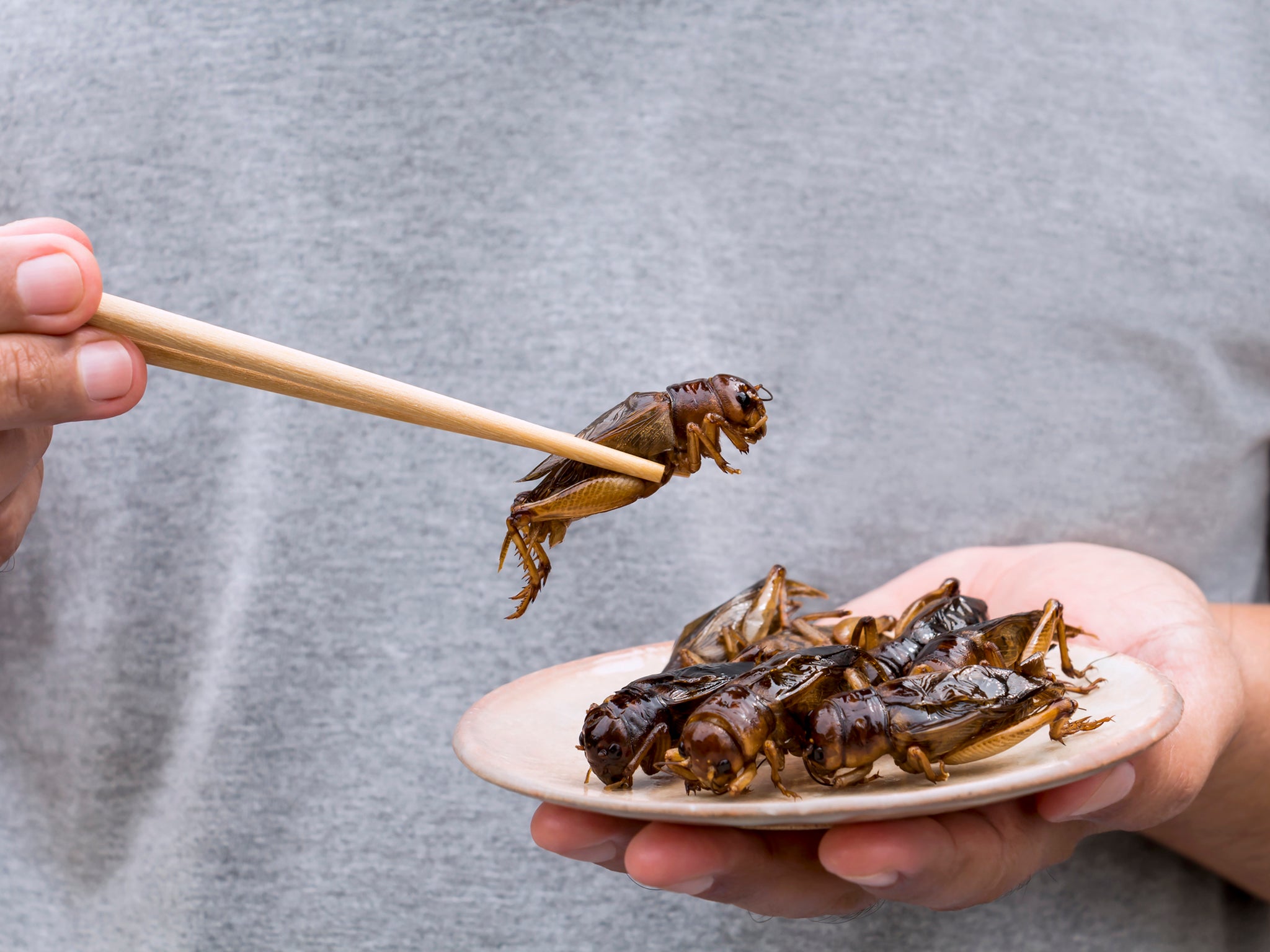
Sorry, did you say worm?” I practically splutter at Leonard Tanyag, executive chef at omakase bar Juno. He’s just casually mentioned that the piece of tuna nigiri in my mouth is garnished with ground mezcal-cured agave worm. Like it’s no more interesting than regular seasoning. I thought it took a lot for an ingredient to surprise me these days – clearly, I was wrong.
The poster child of fussy eating growing up – I’d pick onions out of everything and performatively retch at the sight of broccoli – now I’m eating a dehydrated, powdered version of one of my least favourite creatures. My reformed eating habits have long been a source of amusement for my parents, siblings and long-suffering friends.
But still, worms are on another level of the omnivore scale. In my defence, it wasn’t in the press release; in fact, not much at all is mentioned about the bug offering at Juno, the new-ish omakase bar hidden behind a curtain on the first floor of Mexican-Japanese restaurant Los Mochis in Notting Hill. That’s by design, Tanyag tells me. “You wouldn’t talk about salt and pepper and things like that. It’s just another ingredient, and we’re trying to normalise it a bit.”
I suppose that at an intimate six-seater counter – the smallest in London – they’d also like to be out of spitting range. Tanyag laughs mischievously; waiting until the last possible moment to divulge his secret ingredient is also deliberate. “I don’t tell people it’s bugs until they’ve eaten it because we don’t want to poison their minds, because they’ll immediately think it’s gross.”
In fact, it’s not gross at all. It’s subtler than you’d think; sweeter, too, with a bit of umami and plenty of smoke from the mezcal. The simplicity of sushi is the perfect vehicle to carry the complex flavours, albeit in small doses: Tanyag dabs a dusted pinky finger-sized amount on each piece before handing it over.
Gusano, the worms, are one of three ground insects you’ll find lined up on the bar at Juno, though you wouldn’t know it. They masquerade as innocent little pots of seasonings – right next to the salt. The others are chicatanas (flying ants) and chapuline (grasshoppers), and Tanyag mostly uses them on the nigiri. “It’s like a blank canvas. It has a very subtle flavour so I’ve chosen the bugs and the spices to just put a little bit of an accentuation on it, an emphasis, to enhance the flavour of the fish, rather than taking over.” True, a dab is preferable to a spoonful of the stuff; it packs a punch.
The bugs arrived on the counter as a natural evolution of the restaurant, which has always been focused on sustainability and whose menu reflects the cuisines Tanyag encounters on his travels.
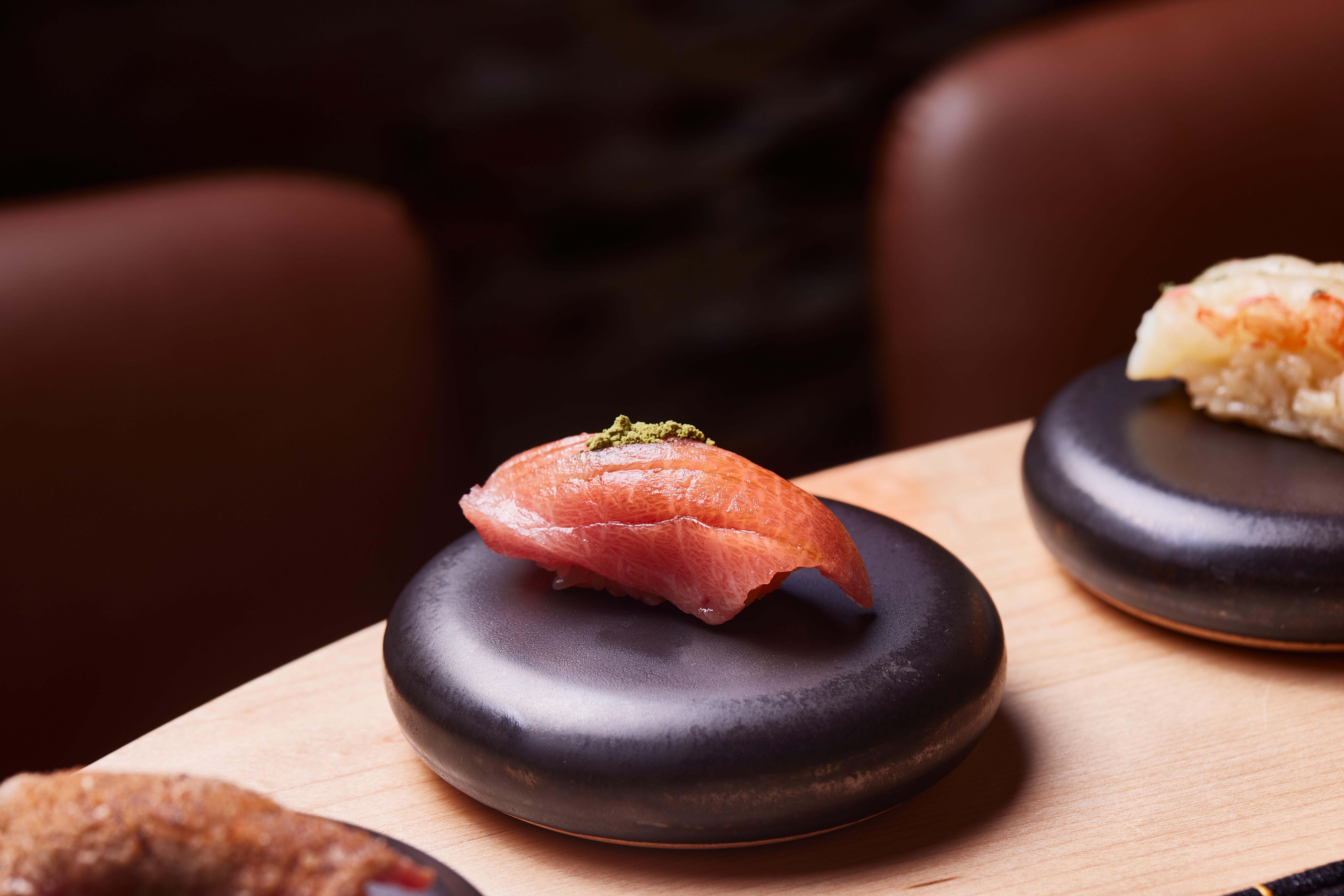
He came across the bugs in Oaxaca, where they’ve been on the menu as far back as the 16th century when they’re a vital protein source before the Spanish introduced domesticated animals. “Chicatanas (flying ants) are very, very rare,” he tells me. “You can harvest them just one day a year. They come out early in the morning around 2 or 3am, and if the sun comes up, it becomes very difficult” to catch them. Last year, Tanyag travelled to Mexico for the harvest – which typically occurs after the first major rainstorm in spring floods the ants’ nests – because he “really wanted to experience what the farmers experience when catching these bugs. It’s very difficult because they are flying and they are biting you.” Some of the ants fall to the ground and are gathered by foragers, while more daring collectors stand in buckets of water to avoid getting bitten. They’re not easy to catch mid-flight, and they’re around for only a couple of days, so the harvest has to be swift. The trip gave him a full appreciation of the process. I, meanwhile, am horrified by the prospect and will be sticking to the eating part.
He also came across the mezcal-cured worms in Oaxaca, after spying them in a shop window. In the 1950s, a mezcal brewer discovered a larva in a batch and thought it improved the flavour. Other producers quickly jumped on the bandwagon. Today, you’ll often see shots served with a worm floating inside. It was long thought that eating the worm had hallucinogenic or aphrodisiac effects – easy to see how they drew that conclusion after downing a bottle of mezcal. In some parts of Mexico, it’s traditional for the maid of honour to eat the worm on a hen do. “I asked the guy if I could taste it,” says Tanyag. “It was unlike anything I’d had before. I had to use it in my work.”
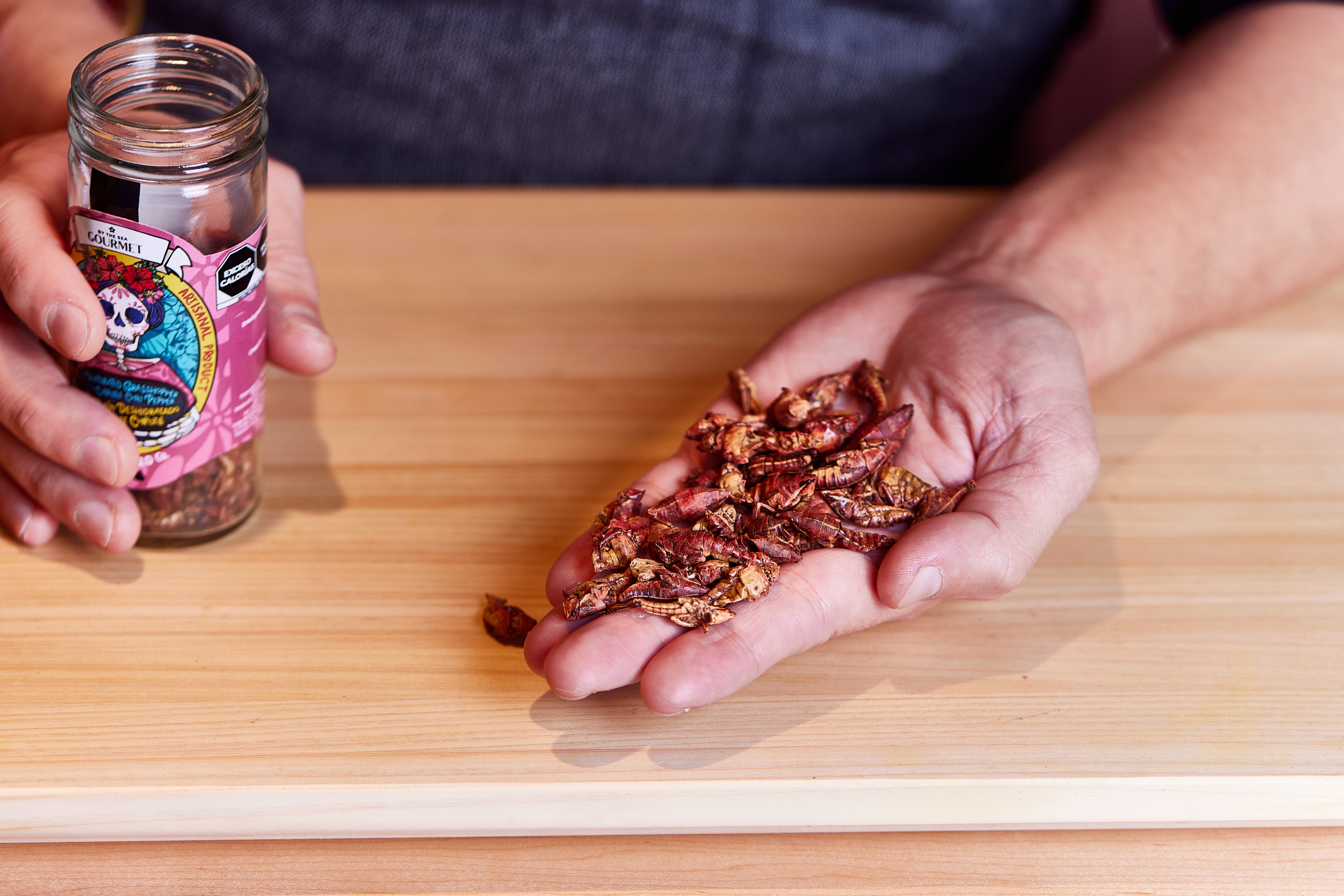
Part of that work takes place in Mexico, where the bugs are heated over a flat griddle to dry and preserve them. Back in the UK, Tanyag grinds them into a powder with a texture not dissimilar to salt, and experiments with the flavour by adding different ingredients. “I don’t like it to be too strong a flavour for the nigiri because I have to deal with a delicate balance between smoky and sweetness and saltiness,” he explains. He adds arbol chilli to the chicatanas to give them more of a kick, and to the gusano, to balance out the smokiness. As he’s only using a dab here and there, a single trip to Mexico can supply the restaurant for a long time.
But it’s the sustainability of edible bugs that first attracted Tanyag to the idea. Sustainability and seasonality have always been embedded in the concept at Los Mochis – they source the best possible ingredients from the best possible, mostly local, suppliers – so introducing insects never felt outlandish. “Insects are very sustainable because they don’t use up any resources. They don’t need any facilities or big spaces with water and things like that,” he says. They’re often harvested, not farmed, in the wild where they’re considered pests. “And they’re also a very high source of protein and they have natural amino acids, which are good for the body.” So you can guzzle down that gusano guilt-free.

Edible bugs are hardly a new concept. Indeed, they’ve been eaten in less finicky countries for centuries, including Tanyag’s home country Japan. A few years ago, they became a short-lived “trend” in the UK: sustainable, nutritious, tasty and surely destined for a supermarket near you. But they never quite took off (pun intended). And, actually, Tanyag doesn’t want them to. He prefers to use them as a secret seasoning rather than a full-blown protein alternative. “I don’t want bugs to become a main meal. If they become really popular, they’re going to do mass production. If they do mass production, they’re going to use chemicals.”
He might not be that keen to learn, then, that bugs aren’t limited to hen dos in Mexico or £200 tasting menus in London. Or that a couple of pioneering restaurateurs on the other side of town see much greater potential – and longevity – in the bug trend.
So much so, they’re betting their savings on it. After launching an insect-ready meal delivery service in lockdown and a successful pop-up restaurant in 2023, Leo Taylor and friend Aaron Thomas opened their first permanent site Yum Bug earlier this year. The tagline is: “Turning CRICKETS into delicious meat that’s sustainable AF”. Needless to say, it’s aimed at quite a different target market. One with TikTok.
For Taylor, who’s half Thai and grew up all over southeast Asia, eating insects “was just part of the everyday of growing up”, but he never set out to make it part of the everyday in London. He was working in design when he saw a report from the UN in 2013 that said bugs as a food source could help boost nutrition, reduce pollution and help fight world hunger.
We’ve had quite a few date nights where the person booking hasn’t necessarily told the other person what it is. So there’s been a freakout at the door, but typically they’re coming in and I think what’s good about the small plate concept is it’s very non-committal
Several years later came Covid-19 and, with more time on their hands during lockdown, Taylor and Thomas “decided to launch our first product, a recipe box called the Bug Box”, which they put together in his mum’s garage – “the best place to experiment with cooking with insects,” he jests. The recipes included cricket and bean stew, chilli con cricket, cricket jalfrezi and cricket lasagne.
With some investment from “people like the Bransons … as well as a big one recently, Brewdog”, Yum Bug’s first iteration was a pop-up at Old Street’s The Bower last October. Chefs like Sam Clark, Clem Haxby, Tim Molena and James Nathan churned out dishes like cricket mince topped with hummus, Calabrian chilli and tomato pappardelle with cricket pieces, cricket ragu… you get the idea. It was a hit. If only the name Kricket hadn’t already been trademarked by an Indian restaurant chain.
“James Watt, the founder of BrewDog, was the one who said to us that maybe we should open the restaurant and we unequivocally said that was a terrible idea, because of all the restaurants closing down at the moment. It’s a tough place to be in, let alone if your entire offering is insects,” Taylor says. I would have thought much the same if the man behind a campaign to chuck taxidermy cats over parliament from a helicopter suggested such a thing. Turns out, this was one of his better ideas – within a few months of opening, they were “serving thousands of people”.
The menu is much the same as the pop-up: bug-based small plates. “Everything from the burrata to the dessert all contains insects. Anywhere that you would typically find meat, there would be the insect version,” he says. “We also use the whole insect, so we’ve got roasted cricket cooked into a chilli oil dressed over a burrata. That’s a crowd favourite.” So is the cricket mince kofta, their best-selling dish, and the cricket brisket tacos.
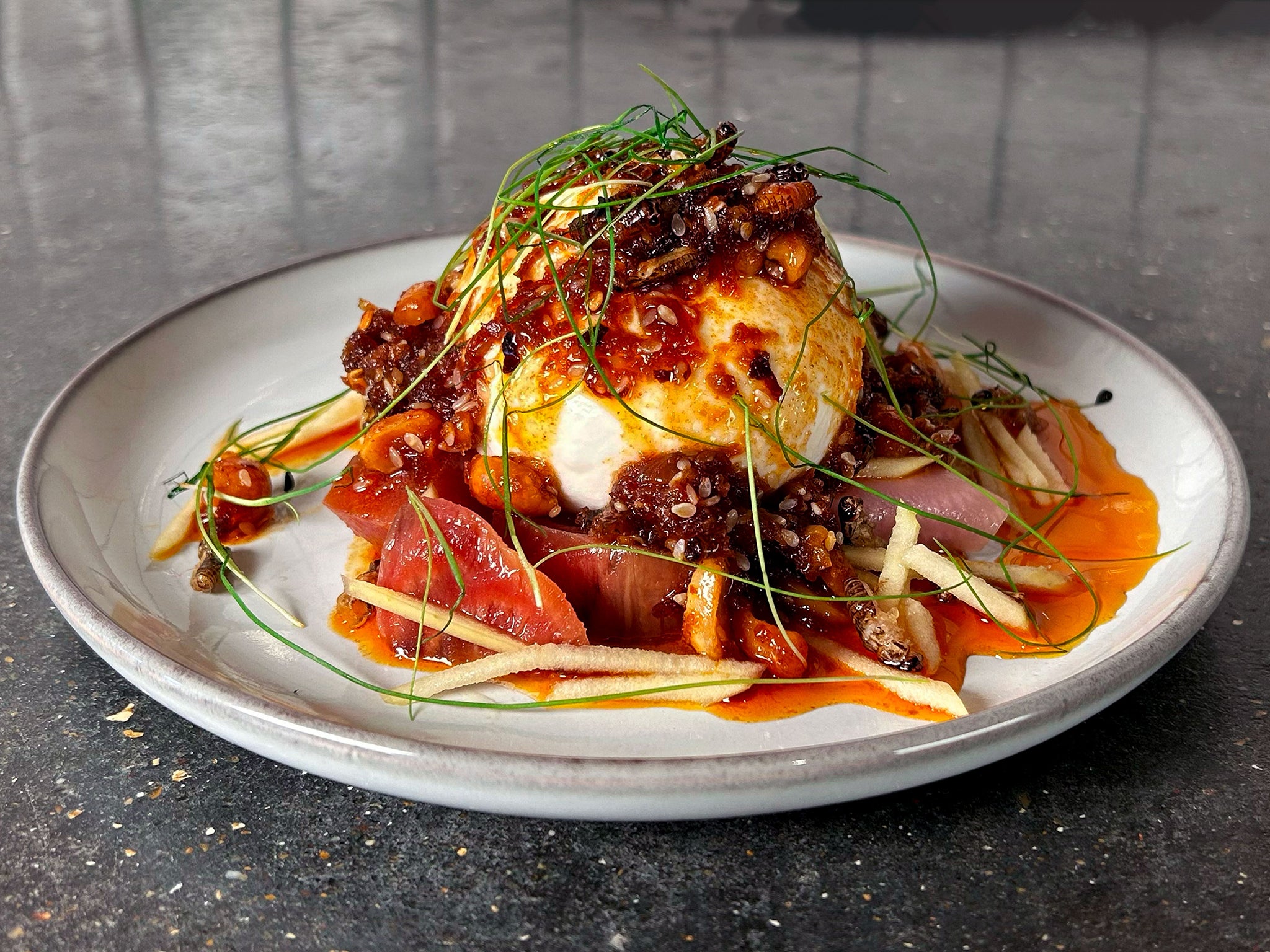
It all sounds pretty good to me – but what do fussy Londoners think? Whole crickets were “a much harder sell. People don’t like to eat something that’s got eyes on it. If you think about fish or seafood, people can be weirded out,” Taylor explains. “We find that when it doesn’t look like an insect, that immediately helps a lot.”
In the equally competitive dating scene, it’s become somewhat of a novelty. “We’ve had quite a few date nights where the person booking hasn’t necessarily told the other person what it is. So there’s been a freakout at the door, but typically they’re coming in and I think what’s good about the small plate concept is it’s very non-committal,” says Taylor. I can’t decide which is more alarming: that my date might trick me into eating a burrata with a cricket on it or that I’m hearing someone extol the virtues of small plates.
50%
more protein in crickets than beef
Either way, it’s a concept people are clearly willing to buy into. I suppose after last year’s tripe fascination, it was only a matter of time before something even weirder appeared on menus.
While the offering at Yum Bug might be a far cry from that at Juno, Taylor’s motivations to get into the bug business were much the same. He cites the fact that “they’re one of the most sustainable proteins in the world.” He might have zero experience in running a restaurant, but he’s got the facts to back it up: “Crickets use 15 times less carbon dioxide compared to beef. It’s the same amount of protein for a fraction of the water and land compared to traditional livestock. You’re looking at about 10 times less land for the same amount of food output.” It helps that they source their crickets from a farm up the road in Cambridgeshire, rather than booking a return flight to Mexico to catch them by hand.
“And from a nutritional perspective, our mince has 50 per cent more protein than your supermarket beef mince. There’s more iron than spinach, more calcium than milk, more potassium than bananas, more B12 than red meat, more fibre than brown rice, similar omega 3 and 6 to salmon. It’s an ongoing list.”
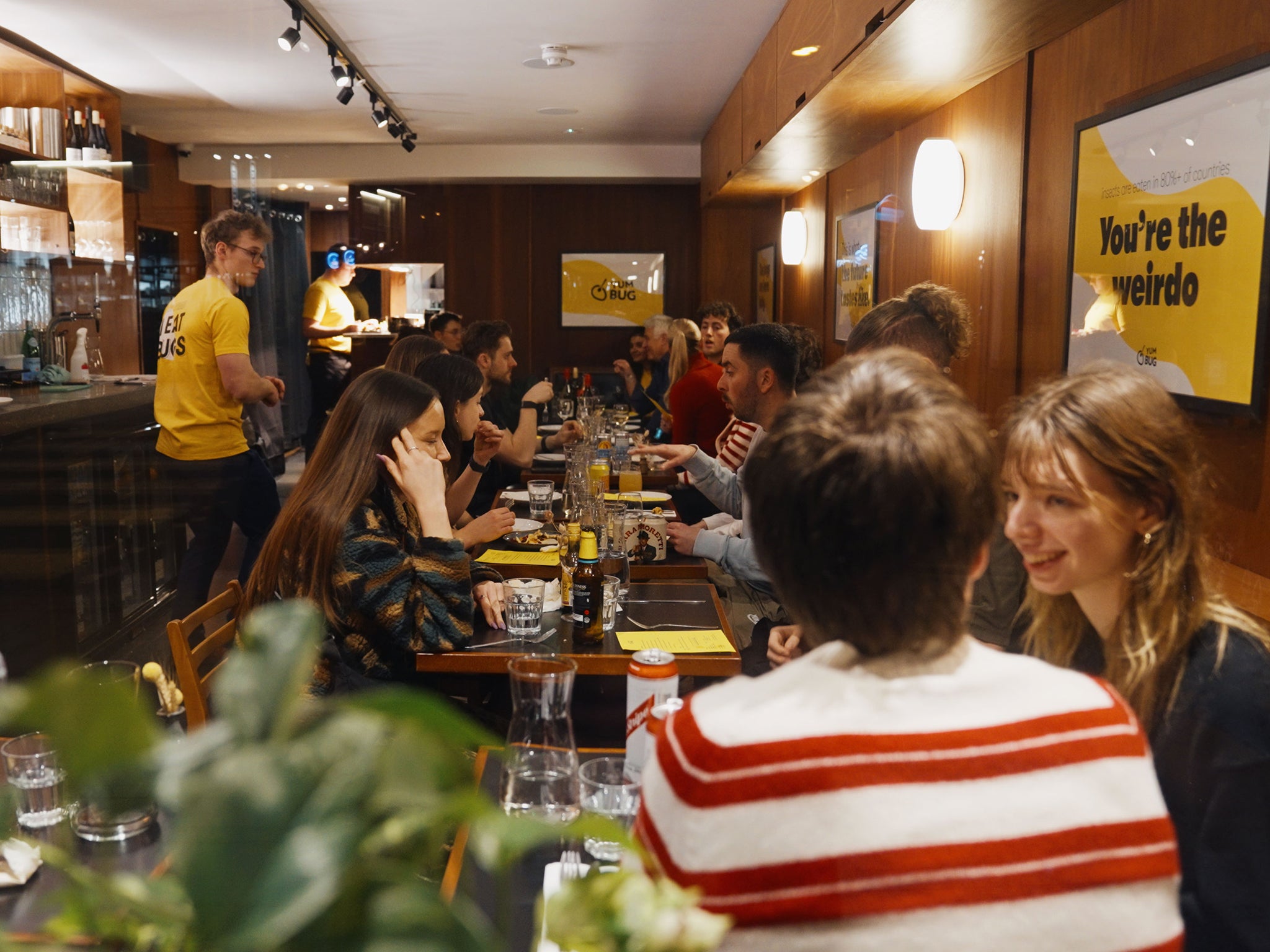
That list also includes a buzzword from the 2024 bingo card: ultra-processed. “If you look at the meat alternatives category right now” – though Taylor considers Yum Bug to be a protein alternative, as it’s still meat – “a lot of stuff is full of ultra-processed ingredients. In order to get a plant-based thing to look like meat and bleed, you have to add loads of stuff that’s not particularly great for us.” It’s straight out of the Tim Spector playbook. “Our mince, as an example, contains three ingredients: it’s cricket, wholewheat flour and salt. And 75 per cent cricket – so natural, high-quality food.”
OK, we get it. Clearly convincing people that we should be ditching cow for cricket isn’t as far out as it might have seemed a decade ago. The biggest issue Yum Bug is facing is actually one of business and bureaucracy. While we’re at a premium on beef right now – you’re looking at around £9 or £10 per kilo for the good stuff – crickets come in at about £12 per kilo, and Yum Bug sells it on for £15. “One of our central challenges right now is getting prices down.” In a market and era as challenging as this one, I don’t need to tell him that it will be imperative to their survival.
Secondly, though Yum Bug chose crickets for their sustainability, nutritional benefits and because they’re the tastiest, there’s also legislation that makes it illegal for them to sell anything other than a handful of species. So despite that UN report suggesting that wasps, beetles and other insects are underutilised as food for both people and livestock, there’s some way to go in persuading legislators that bugs have a place in British diets for the sake of the environment and public health.
It’s certainly not me, or the thousands of people booking up these restaurants, that need convincing. The bug trend has well and truly landed.
Join our commenting forum
Join thought-provoking conversations, follow other Independent readers and see their replies
Comments
Bookmark popover
Removed from bookmarks